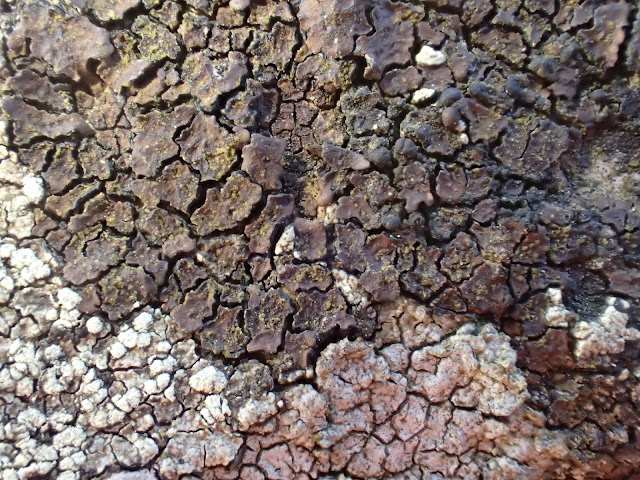
I have been making a display of activities of Craven Conservation Group ready for the YNU Conference on 8 April. The display is based on a map of our area of North Craven. I'll show you it another time. In doing so I have discovered that our area has the oldest rocks in Yorkshire.
Here I am sitting on some of these rocks. (With Fountains Fell in the background)
The Silurian (443Myr-419Myr) and Ordovician (485Myr-443Myr ) rocks are 450 Million years old (ish). They got worn away and then became covered by the sea; Then 350 Million years ago in this sea, limestone formed on top of them. There is thus a gap in time of 100 million years between the Silurian "slate" and the Carboniferous Limestone. This line is called an "Unconformity".
Water sinks into the cracks in limestone, but cannot pass through the slate so comes out in Springs. On Sunday 19th we had lots of rain at Settle and the springs appeared in many places, marking the unconformity. Our Geology Tutor noticed that in his trip to Crummackdale. I just noted that the road at Studfold was flooded on the way to Horton Marmalade Festival, got to the Church bought lunch and came home as quickly as I could.
The old rock is actually not slate because it has a lot of particles in it of mixed sizes. This type of rock is called Greywacke.
Greywacke is a poorly sorted sandstone containing fragments of rock and minerals in a clayey matrix.
Formation of Greywacke
On 15th March I set off on a walk north of Sannat Hall, near Stainforth. On returning I descended through a field with the bedrock showing. The rock is an acid rock so has different lichens to the limestone higher up the hill.
This is Candelariella coralliza
It is bright yellow, and grows on exposed acid rocks where birds perch. It has a thick areolate thallus (the thallus forms little islands) Dobson says it is rarely fertile; this patch is. (Someone just may tell me it is C vitellina.. I must admit the in the picture here, the thallus is not as thick as that which we found at Turf Hill or that I found at Wrynose Pass)
Or maybe the fruiting bodies are C vitellina, and the more cracked, yellower thallus nearby is C. coralliza.

 |
| Hey ho, the granules do appear too flattened for C. coralliza |
Xanthoparmelia conspersa This is a splendid lichen.
I had become excited when I found it three months earlier just above Stainforth .. I suppose only half a mile away from where I was now.
We found some at Eycott Hill at the edge of the North Lake District, three years ago. The thallus lobes up to 3mm wide overlap; It has coralloid isidia


Or on video:-
I think the next lichen is Tremolecia atrata -
though to be sure it is not Rhizocarpon oederi I woud have to check the spores to make sure they are simple, and not muriform as in R oederi


Next there is Acarospora fuscata

Stereocaulon evolutum
This branches spread more from the base than does S vesuvianum. The phyllocladia are wider than the pseudopodetia, and are flattened, almost digitate
(Even if this photo is vesuvianum, the piece I brought back with me was evolutum)

Next is Parmelia omphalodes It is reddy brown

The next one is Physcia
Physcia caesia I think.

This next one is a mystery lichen - any suggestions?
It is on the same acid rock as the other species above.

Here we have a jelly lichen. The fruiting bodies are on stalks, ant there are no isidia - so I am guessing it is Collema polycarpon It was growing on the acid rock but it was being flushed with lime rich water and growing near base loving mosses such as Scorpidium cossonii

The next is a video. I think it may well start with Nostoc, and finish with Scorpidium cossonii, but in the middle there is some Collema.
This next one was one of the most beautiful lichens .. then I realised it was just Leanora muralis. It grows near the centre of large towns on paving stones, and I think on the tarmac of Horton churchyard. Dobson says "Often on acid rocks, rarer in its natural habitat of bird-perching sites in uplands

Here's a view looking along the limestone. The Silurian rock is to the right and lower down. The limestone is covered by glacial drift and the Yoredale series to the left


Yes I still have my Christmas Pudding hat .. It was Christmassy cold weather.
No comments:
Post a Comment